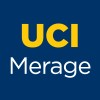Skills-Based Educational Strategies for Reduction of Vascular Events in Orange County (SERVEOC)
Hypertension

About this trial
This is an interventional prevention trial for Hypertension focused on measuring Hypertension, Life's Essential 8, Social Networks, Community Health Workers, Hispanic/Latinx, Vietnamese
Eligibility Criteria
Inclusion Criteria: Living in Santa Ana in a randomly identified household (or living in Westminster or Garden Grove to achieve oversampling of Vietnamese families) Speaks one of the languages in which the survey is administered in (English, Spanish, and Vietnamese) Aged >=18 years old at time of enrollment Has at least one friend/family/household member participating in the study with them, (if they are a minor they must have at least one adult participant participating with them) If child turns 5 during the 3 years of the study they will be eligible to participate and we will enroll them with parent permission Exclusion Criteria: Dementia history, cognitive impairment, or any condition impairing his/her ability to participate in education Life expectancy less than 1 year Unable to give informed consent or unable to obtain parent/guardian permission (minors) Lives in a nursing home or requires 24-hour care
Sites / Locations
- University of California, IrvineRecruiting
Arms of the Study
Arm 1
Arm 2
Placebo Comparator
Experimental
Enhanced Standard Intervention
SERVE OC Intervention
Families randomized to enhanced standard intervention (ESI) will be given informational materials from the American Heart Association on cardiovascular health. ESI includes self-management which is standard care. At 12, 24, and 36 months they will be asked to return for in person follow-up to collect bio measures again and complete follow up surveys at the UCI FQHC in Santa Ana or during scheduled community data collection events. All adults will be asked to take their blood pressure with the device once a week.
In the SERVE OC intervention, participants will receive AHA informational materials, access to the app/web portal, and will be assigned a CHW to work with over the 3 years of the study. The CHW will facilitate the intervention for the family which includes 1) Conducting a family "intake" of risk factors through the LE8 assessment 2) Facilitate the creation of a family network-tailored action plan 3) Provide guidance to activate/reinforce action plans using the interactive part of the app/web portal. They will meet with their CHW monthly to learn about CVH, work on their goals, and action plans. Meetings with CHWs will take place in their homes, the UCI FQHC in Santa Ana, over zoom, or other locations. All adults will be asked to take their blood pressure with the device once a week.
Outcomes
Primary Outcome Measures
Secondary Outcome Measures
Full Information
1. Study Identification
2. Study Status
3. Sponsor/Collaborators
4. Oversight
5. Study Description
6. Conditions and Keywords
7. Study Design
8. Arms, Groups, and Interventions
10. Eligibility
12. IPD Sharing Statement
Learn more about this trial
